Scientific name: Ribes cereum
Suggested pronunciation: RYE-bees Kee-ee-rum or SER-ee-um
Common name: wax currant
Family: Grossulariaceae
Article from writings of Janice Tucker (1946-2021)
The enduring promise of spring is here in full force. Trees are bursting with catkins, leaves and blossoms. Of course the crocus, daffodils, hyacinths, narcissus and other bulbs are out, to be followed by tulips, chives and other spring bulbs. A recent stroll through a field revealed the low-to-the-ground early Easter daisies smiling back up at me. The fruit trees are bursting into bloom and are now playing dodge’em with the weather in hopes that a late frost will not zap the blossoms. If they do get zapped, we won’t have fruit, so fingers crossed. The outdoor landscape changes daily as the plant world continues with its active life cycle. Take a moment to enjoy it.
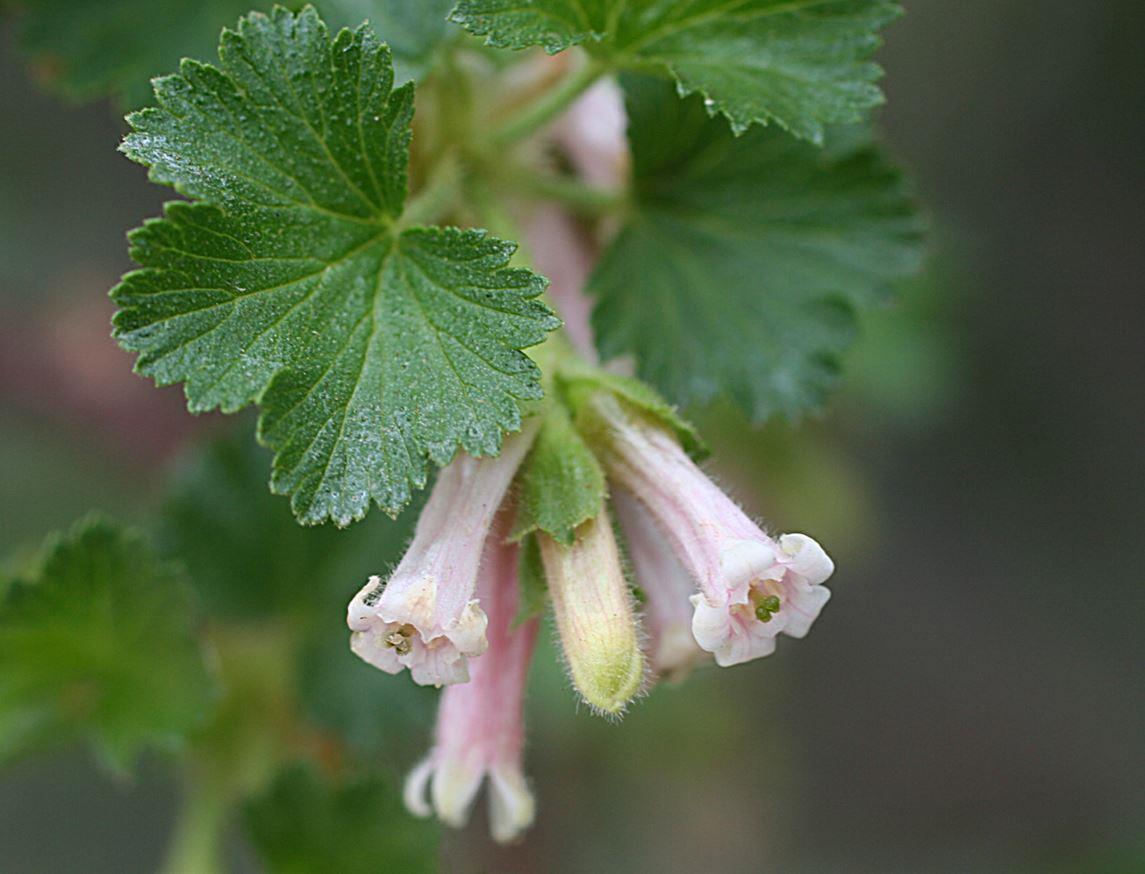
Western New Mexico University Department of Natural Sciences and the Dale A. Zimmerman Herbarium
Most taxonomist presently consider the 150 species of the Ribes genus to be the only genus (monotypic) in the Grossulariaceae plant family. However, there are some taxonomists who believe the gooseberry species should be separated into the genus of Grossularia. And THEN there are those who believe that the entire Ribes genus should be moved to the Saxifragaceae family. BUT, right now let’s leave that argument for the taxonomists to sort out. Maybe they’ll let us know their final decision.
Let’s just stay calm and pretend there is no name/classification debate. Who knows when it will be settled anyway? That way we can continue with the conviction that the Ribes genus will keep all its species and remain the monotypic genus in the Grossulariaceae family.
Now that we’ve dealt with the usual confusion over scientific plant names, let’s just move right along to even more disagreements over the Grossulariaceae common family name debate of gooseberry vs. currant. Isn’t this fun? Some claim that gooseberries have thorns and currants do not. And there are those who dispute this description. In reality it is possible that either species can be thorny at one time in its life but not always. Or it could be thornless or partially thorny and thornless. And so on and so forth.
Really, all this argument over plant names, both scientific and common, could have us all suffering from a cross-eyed headache. To avoid that, we’ll leave the plant name subject behind and concentrate on the characteristics of our featured plant, the wax currant (Ribes cereum).
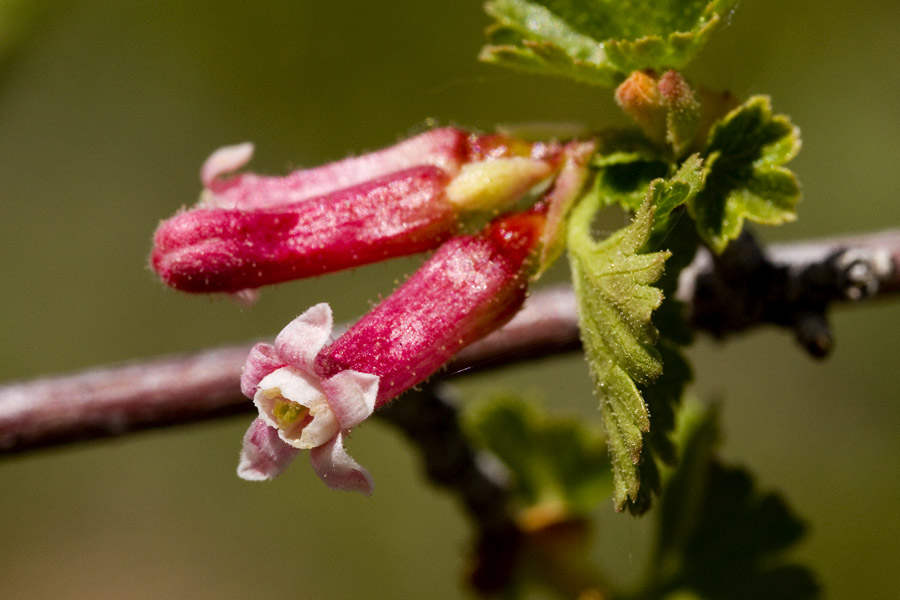
Photo by Patrick Alexander.
Native to all temperate regions of the Northern Hemisphere the wax currant grows to a mature height of about 6 feet. Its growth habit is a dense shrub with many gray-stemmed branches, which are usually thornless.
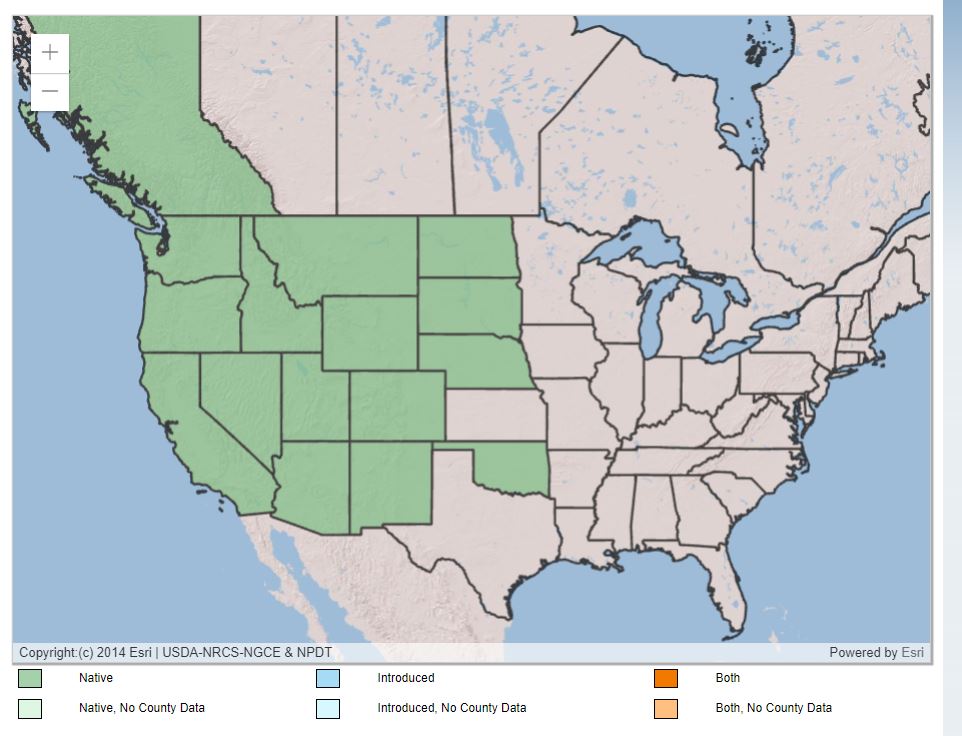
The tiny, green, palmate leaves secrete a wax-like substance, which explains both the scientific species name of cereum (which means waxy) and its common name of wax currant. The small size of the leaves makes them very efficient in processing moisture that helps the plant to survive and thrive in dry climates.
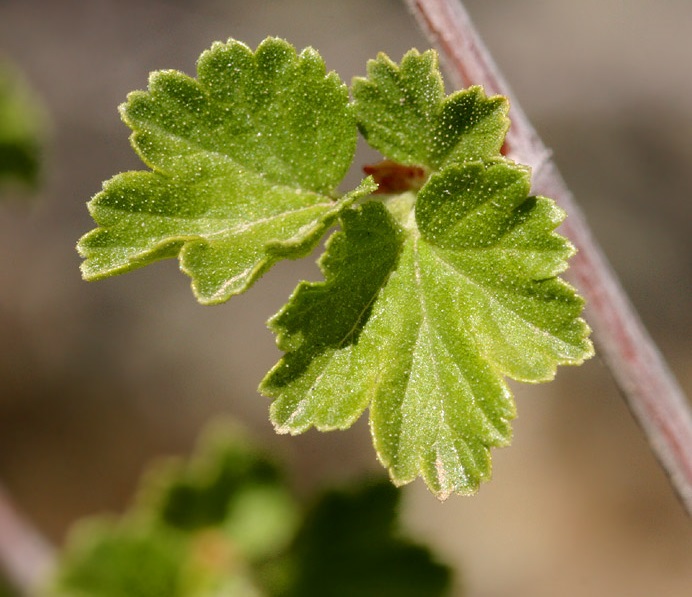
Photo by Patrick Alexander. Ribes cereum at Vaqueros Canyon, 4/30/06.
The small, hairy, tubular flowers shyly peek out from beneath the leaves and can be greenish-white, white, pale pink or dark pink. The flowers have a noticeable green style that extends past the petals, inviting pollinators to visit. After the bloom, beautiful, bright red berries appear, often with the flower sepal still attached to the center of the berries. Some claim the fruit is not that palatable while others declare it is juicy with a mild, “different” taste. Somehow “different” does not sound very enticing, especially when it is written in quotes. The scientific genus name of Ribes is Arabic for a shrub with acidic fruit – and that description often indicates a lip-puckering taste. Eating too many berries could result in nausea. Let’s just don’t eat the berries, okay?
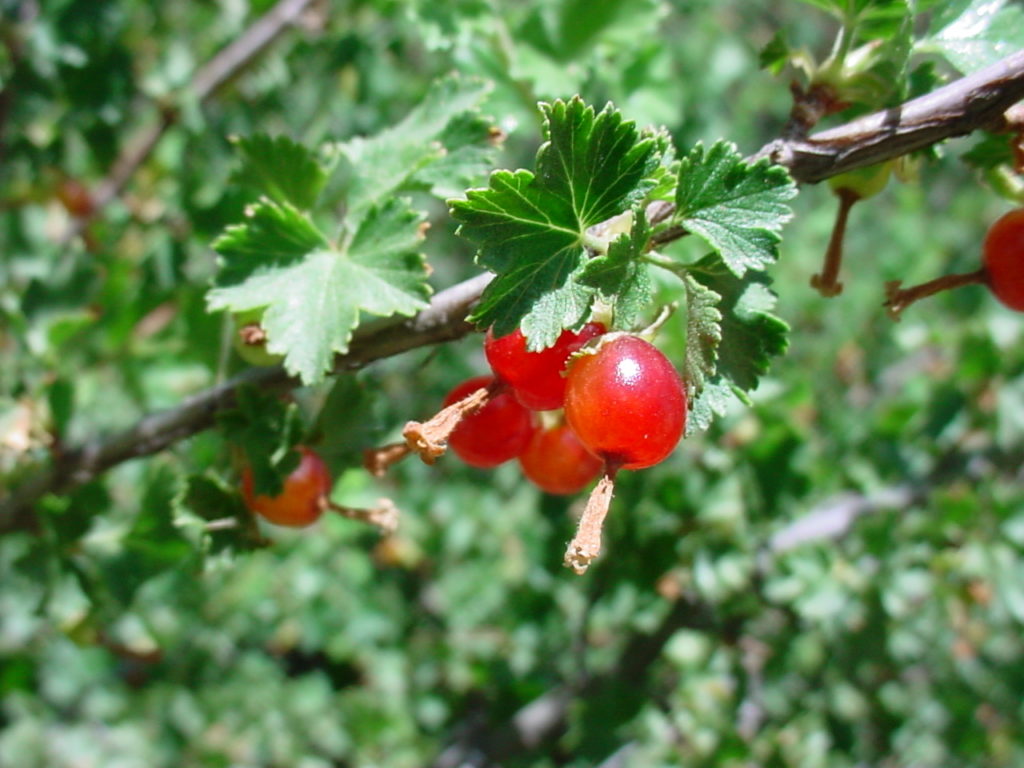
Bright red berries. Photo by Dr. Russ Kleinman, Western New Mexico University Department of Natural Sciences and the Dale A. Zimmerman Herbarium.
There is a one small wax currant in Ojos y Manos: Eyes and Hands ethnobotanical garden, just on your right as you pass the Horno Plaza and towards the Sunset Discovery Walk. It blooms in April, so look for it this month in the Botanical Garden. The red berries should be evident by early to mid-July.
As an interesting aside a synonym for Ribes cereum var. cereum is Ribes inebrians. “Inebrians” is Latin for “drunk or inebriated”. This species was so named because ingesting the fermented fruit can cause one to become quite loopy and unsteady on the old pins. Yet another reason to avoid eating the berries. However, the birds will probably beat any humans to the berries before fermentation occurs. But just in case, come late July or August, if you are in the vicinity of the wax currant be on the lookout for birds flying in a crazy zig-zag pattern.
Janice’s references were not included when she wrote about this plant on May 9, 2016, however here are some helpful resources:
Cannon, Paul Lee. “A Currant Affair”. Pacific Horticulture. Web. 28 Mar. 2022. Retrieved from: https://www.pacifichorticulture.org/articles/a-currant-affair/
“Ribes cereum”. SEINet Portal Network, 2022. http//:swbiodiversity.org/seinet/index.php . Accessed on March 17, 2022.
“Ribes cereum”. Garden Explorer. Santa Fe Botanical Garden. Web. 17 Mar. 2022. Retrieved from: https://santafebotanicalgarden.gardenexplorer.org/taxon-607.aspx?qr=0
Schneider, Al. “Ribes”. WILDFLOWERS, FERNS, & TREES of Colorado, New Mexico, Arizona, & Utah. Web. 28 March 2022. Retrieved from: https://www.swcoloradowildflowers.com/White%20Enlarged%20Photo%20Pages/ribes%202.htm
USDA, NRCS. 2022. The PLANTS Database (http://plants.usda.gov, 03/17/2022). National Plant Data Team, Greensboro, NC USA.


